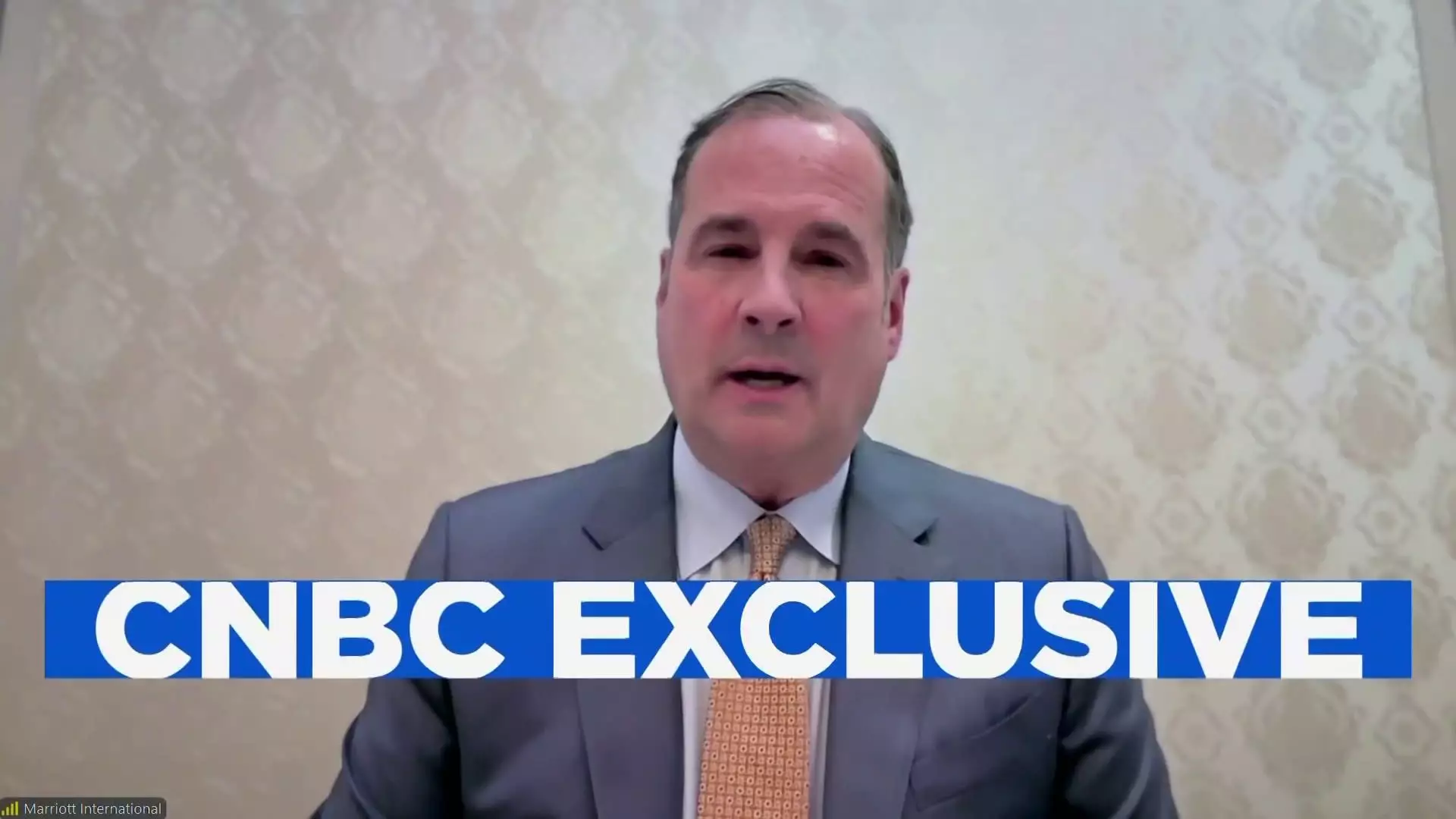Marriott International is currently navigating a complex landscape marked by both significant challenges and promising opportunities. As CEO Anthony Capuano articulated in a recent interview with CNBC, while the company is experiencing company-wide layoffs and a slow recovery in China’s tourism sector, it remains optimistic about its global operations. This duality—struggling with obstacles while simultaneously pursuing growth—is the crux of Marriott’s current strategic positioning.
The recent decision to eliminate over 800 corporate jobs has raised eyebrows and caused considerable concern among employees and industry analysts alike. Capuano defended this move, categorizing it not as a reactionary slashing of costs but rather as a necessary reorganization aimed at streamlining operations. He claimed that Marriott’s recent expansion into new markets necessitated a shift in decision-making structures toward a more decentralized approach. By empowering regional teams, Marriott aims to respond more effectively to local market needs.
However, the impact of these layoffs cannot be understated. While Capuano assures that service levels at their hotels will remain unaffected, the psychological implications for employees and the potential disruption to corporate culture warrant scrutiny. Such large-scale layoffs often lead to decreased morale, increased workloads for remaining staff, and a loss of institutional knowledge that can take years to rebuild.
Despite these internal challenges, Marriott’s third-quarter earnings present a robust picture of growth metrics globally. The increase of 3% in revenue per available room (RevPar), coupled with a 6% year-on-year net room growth, highlights a recovery trajectory in many regions. Capuano also emphasized that group travel has become a crucial driver of this growth, referring to it as the “bright, shining star” of the current operational landscape.
Yet, there remains a stark contrast between the performance in China and other markets. Despite China being the company’s second-largest market, it reported an 8% drop in RevPar. Capuano remains optimistic, indicating that the long-term potential for domestic tourism in China is still intact, as evidenced by record hotel signings. Nonetheless, one must wonder whether this optimism is justified given the unpredictable nature of China’s tourism recovery, which could be hampered by ongoing geopolitical tensions and public health concerns.
One of the standout aspects of Marriott’s strategy has been its successful loyalty program, Bonvoy, which now boasts a staggering 219 million members. The appetite for travel remains present, as evidenced by the addition of 9 million new members in just one quarter. Partnerships with companies like Uber and Starbucks amplify this value proposition, positioning Marriott as more than just a hotel brand but as part of a holistic lifestyle ecosystem. This emphasis on loyalty not only fosters customer retention but also boosts revenues as satisfied members are more likely to choose Marriott properties in the future.
This success, however, raises questions about whether the loyalty program can sustain its momentum. As competition within the hospitality space intensifies, Marriott will need to continuously innovate and differentiate the Bonvoy experience from rival programs, particularly in targeting millennial and Gen Z travelers who prioritize unique experiences over traditional loyalty structures.
As the company looks toward 2025, the reduction of corporate costs by approximately $80 million to $90 million signals a significant pivot in growth strategy. If executed well, this could lead to a more agile company better suited to adapt to market fluctuations. The emphasis on restoring international inbound travel, especially in Asia-Pacific markets, is a crucial strategy, particularly as airline capacity begins to stabilize post-pandemic.
Moreover, the successful opening of its 100th hotel in Japan reflects Marriott’s strategic focus on key Asian markets, underlining the company’s belief in the long-term recovery of tourism in these regions.
Marriott International stands at a crossroads, challenged by internal restructuring and external economic pressures while simultaneously fostering an optimistic outlook for international tourism and growth. The careful balancing act between cost-cutting measures, enhancing service delivery, and leveraging strategic partnerships will be pivotal as the company moves forward. Thus, the coming years will be telling for Marriott, as it continues to navigate this complex landscape, striving not only to rebound from setbacks but to emerge stronger in the competitive hospitality industry.

